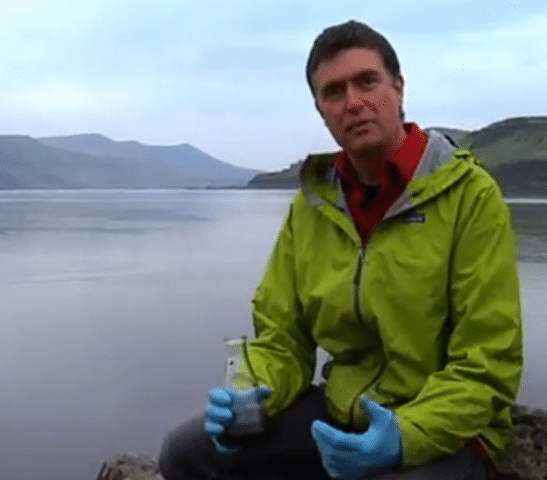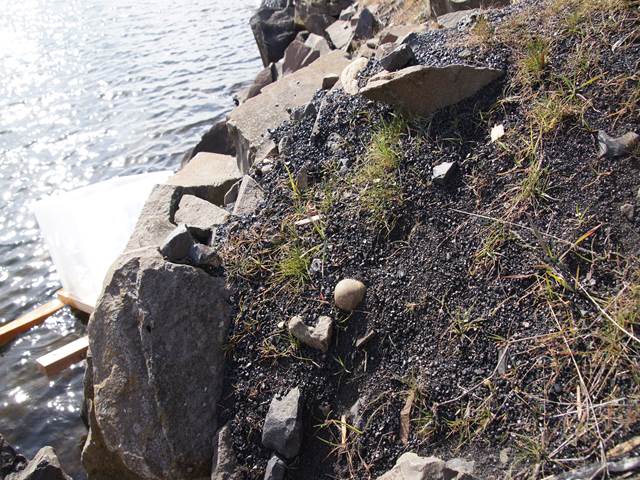A lawsuit against the BNSF Railway Company will proceed after the U.S. District Court for the Western District of Washington rejected the company’s motion to dismiss a Clean Water Act lawsuit filed by Columbia Riverkeeper, Sierra Club and six other groups.
The Riverkeepers say BNSF trains are spilling coal into the Columbia River while en route to the coal-fired power plant in Centralia, Wash., and Canadian ports for export. A video shows the organization’s executive director Brett VandenHeuvel finding piles of coal along the river and holding a flask of coal-polluted water.
Coal contains arsenic, mercury and lead, which pollute water and harm aquatic life. According to BNSF’s own calculations, coal trains can lose 500 pounds of coal from each car.
If plans to export more coal to Asia from Oregon, Washington and B.C. go ahead, up to 20 more coal trains a day would travel along the Columbia River, according to Columbia Riverkeeper.
The court’s ruling comes shortly after scientists at the University of Washington published a groundbreaking study on air quality impacts from train traffic in Washington State. The study was published in the international journal Atmospheric Pollution Research.
The scientists, who raised money for their research from the public, tracked particulate matter, linked to heart attack, stroke, respiratory problems and lung damage. They found living close to rail lines significantly increases one’s exposure to particulate matter.
The research indicates trackside homes in Seattle’s park-lined, waterfront Blue Ridge neighborhood have air as polluted as the industrial Duwamish River area of Seattle due largely to train traffic.
Dan Jaffe, a professor in the department of atmospheric sciences at the University of Washington, and his team identified spikes in in two distinct categories of particulate matter whenever trains passed testing equipment.
In Blue Ridge, the testing equipment was set up on the patio of a home 80 feet from the train tracks. After coal trains passed, there was a statistically significant spike in larger particles, compared to other train types. These larger particles most likely consist of coal dust. The trains also leave behind diesel particulate matter in their exhaust, which the World Health Organization says is “carcinogenic to humans.”
Columbia Riverkeeper staff found coal on the banks of the Columbia River.
According to Jaffe’s calculations, if proposed coal terminals are approved and rail traffic increases, trackside areas like Blue Ridge could fail to meet the Environmental Protection Agency’s (EPA) air quality standards.
The Blue Ridge site was chosen for its distance from outside particulate matter sources such as freeways. The researchers compared their data to data collected by the state at the Duwamish industrial area and a control site far away from railway lines or significant outside sources of particulate matter. They found the Duwamish and Blue Ridge neighborhoods already have levels of particulate matter more than double that of the control sites on average.
Jaffe predicts the addition of about 20 coal trains will result in a 50 percent increase in particulate matter — 25 percent above the EPA’s air quality standard. His limited month-long test cannot be used for EPA compliance standards, which require three years of data, but it identifies areas for future research.
Three proposals are on the table to ship a combined 116 million tons of coal from the U.S. Northwest. When burned, the coal would result in nearly four times as much carbon pollution as the Keystone XL pipeline.
Additional reporting and research by Stephanie Angelis.
Images: Columbia Riverkeeper
Subscribe to our newsletter
Stay up to date with DeSmog news and alerts







